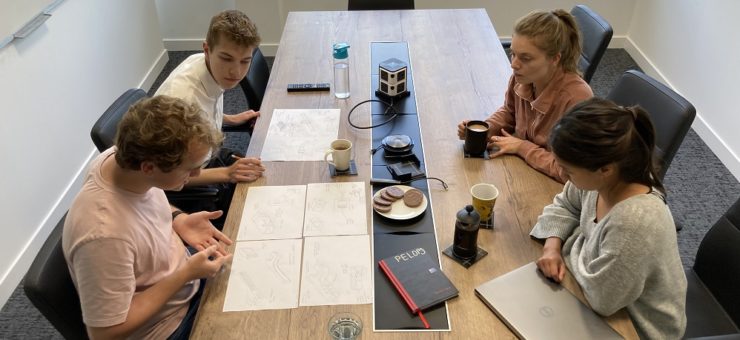UX design can make or break your product
7 February 2023
UX design to influence a change in behaviour from the user and how that can be used to improve adherence to medication and encourage more sustainable behaviours.
Imagine you have arthritis in your hands, and you have just picked up your prescription from the pharmacist. You go home, and all are ready to start your new medication, but due to the design of the packaging, you can’t open the bottle….
The medication could be the one thing that will make you feel better, have less pain and give you a better quality of life, and yet you simply can’t access it easily. Without help, you may skip your dose.
BJ Fogg, founder of the Stanford Persuasive Technology Lab came up with the following formula:
Behaviour = Motivation * Ability * Trigger
If we look at the above example, the motivation is high (alleviate pain), the trigger is high (pain) but the ability is low, therefore in this instance, the behaviour will change to an option that answers all the above positively.
This is where effective UX design, whether it’s packaging or the administering device, can make or break a product.
To fully understand the behaviours and pain points of a product or service, it’s important to speak to and observe the end users. User studies at the early stage of the development process will help shape the end product and potentially introduce a number of changes to ensure it’s a success.
Improve adherence to medication
Consistency is key when taking medication. How can designers help patients keep up their medical regime around busy lives? What pain points do the patients experience that demotivate them from adhering to medication and how can that be relieved?
One pain point that was experienced by every patient (especially those with repeat prescriptions) was the long, tedious task of collecting their medication, but in 2019 the UK National Health Service prescription service was digitised. This vastly improved convenience for patients as it eliminates the need to go to the GP to simply collect a piece of paper. The prescription is sent directly to the pharmacy and medicine can either be collected or even delivered straight to the patients’ house. An app was built to provide an easy-to-use interface where the patient is in control of when repeat prescriptions are ordered and where they are sent to.
By simplifying the process and eliminating the pain point of an extended errand, adherence is improved, and medication is consistently available. A holistic, systems-based approach was required to realise impactful change.
Behaviour that leads to sustainability
The best user designs are those that are habit forming. In Unilever’s 5 levers for change, the goal is to make any change in behaviour easy to understand, easy to use, desirable, and rewarding. If these are achieved, then habitual use will be the result. This can be leveraged to influence consumers to lead a more sustainable lifestyle.
Yeo Valley’s ‘zipper’ on their yoghurt pot is a great example of how simple design changed consumer behaviour using the 5 levers for change. The zipper graphic and perforated edge on the cardboard sleeve makes separating the material easy to understand and do. Once the cardboard has been removed, it reveals fun stories, images, and competitions. This makes separating materials to allow it to be compatible in the wider recycling system both desirable and rewarding, and provides extra marketing space.
The benefits of recycling is universally understood and many have genuine intentions to do their bit and recycle. Despite this, contaminants are commonly found in mixed recycling streams, with 84% of British citizens putting unacceptable waste in kerbside collection. It is much easier and habitual to toss waste packaging straight into the bin without rinsing, drying, or separating materials. Many are also uncertain about what is recyclable in their kerbside collection and put anything that is potentially recyclable in the recycling bin – this is in part fuelled by the different councils recycling rules and capabilities. However, the consequences of this can be far greater than anticipated with over half a million tonnes of UK household recycling being rejected in 2019/20.
Conclusion
Effective human factors design should be so intuitive that users don’t even know that it’s there. It’s imperative that the wider product system and context is considered so the design can fit seamlessly into it to reinforce positive behaviours at every step. Subtle steps and pathways to help users can create behavioural change and each of those changes will make an impact on the usability of your product. Get that right, and you’ll have made a success of it.
Contact us today to find out how we can help.
Written by Kiara Taylor, UX Designer, Springboard


